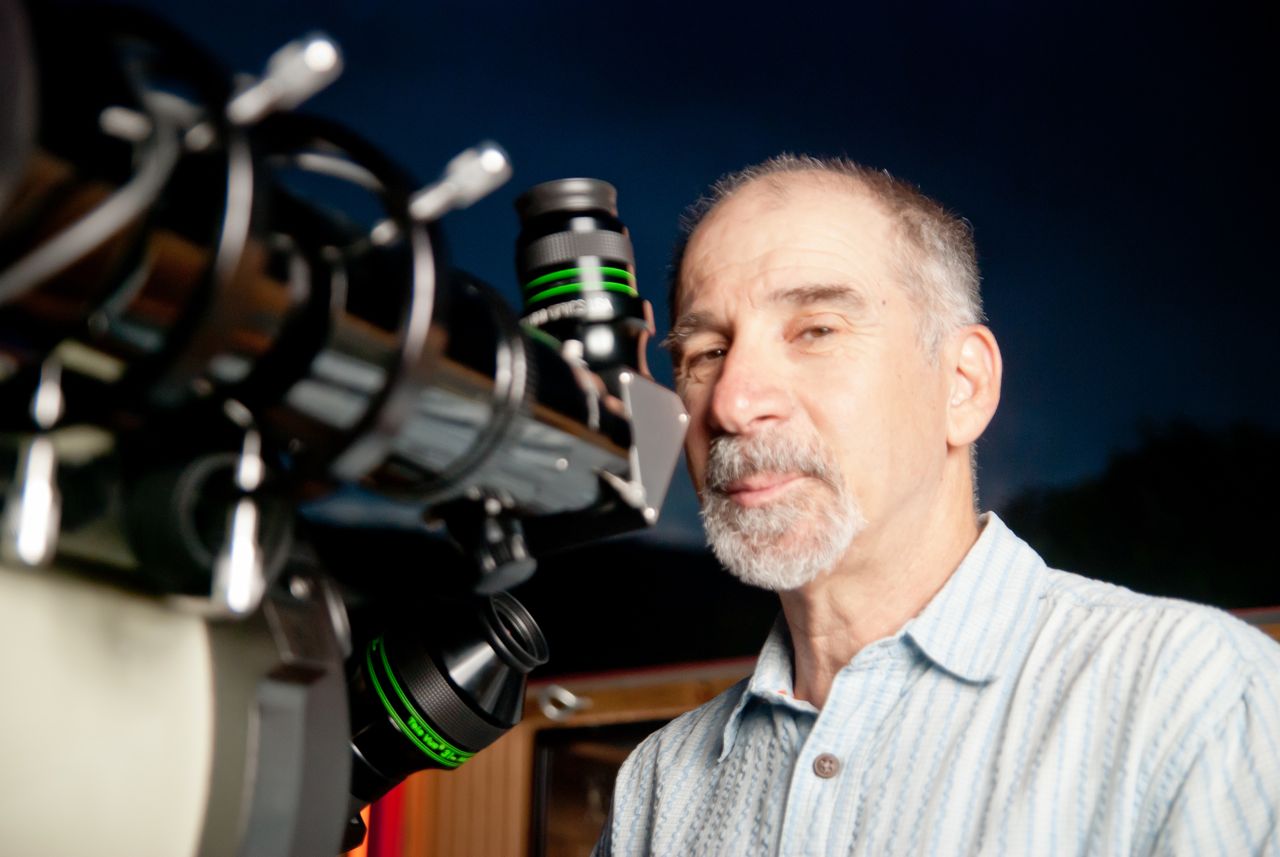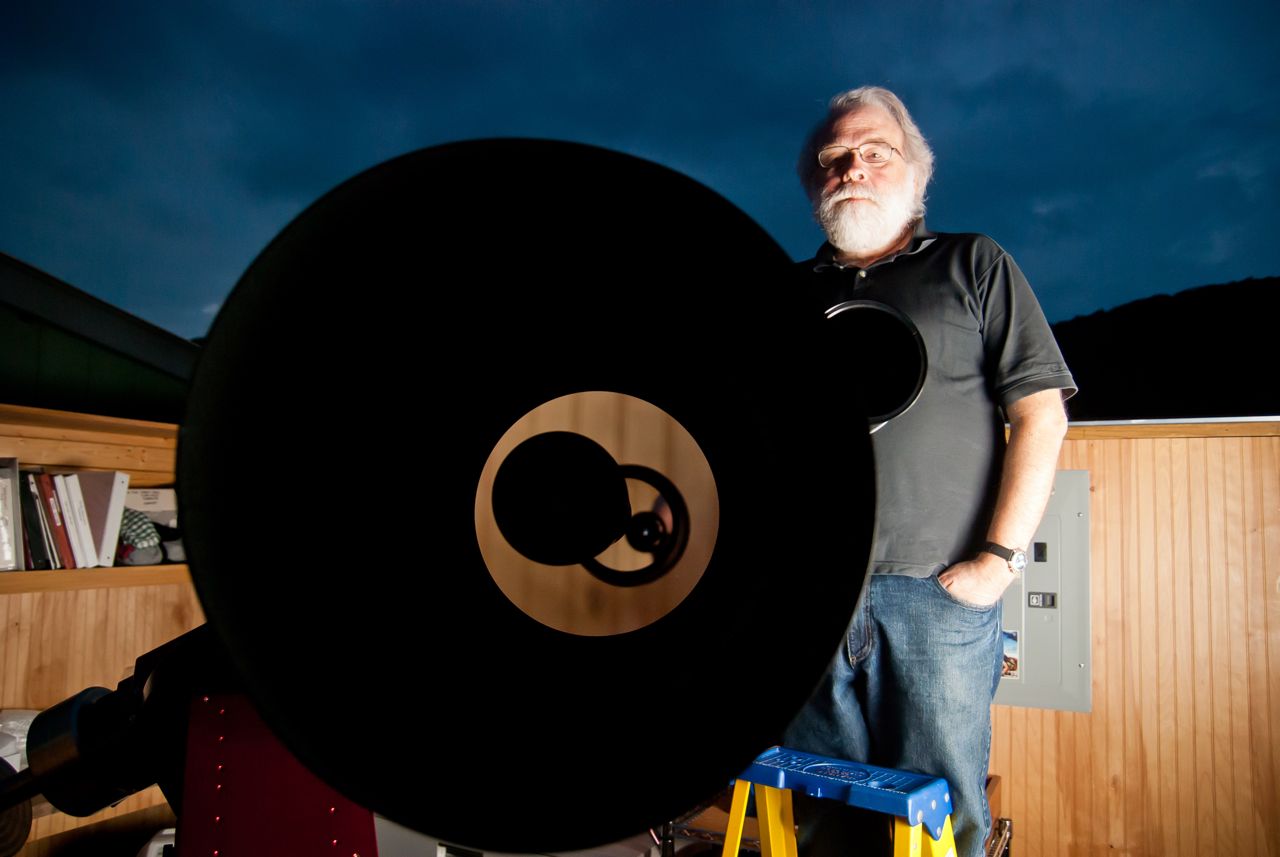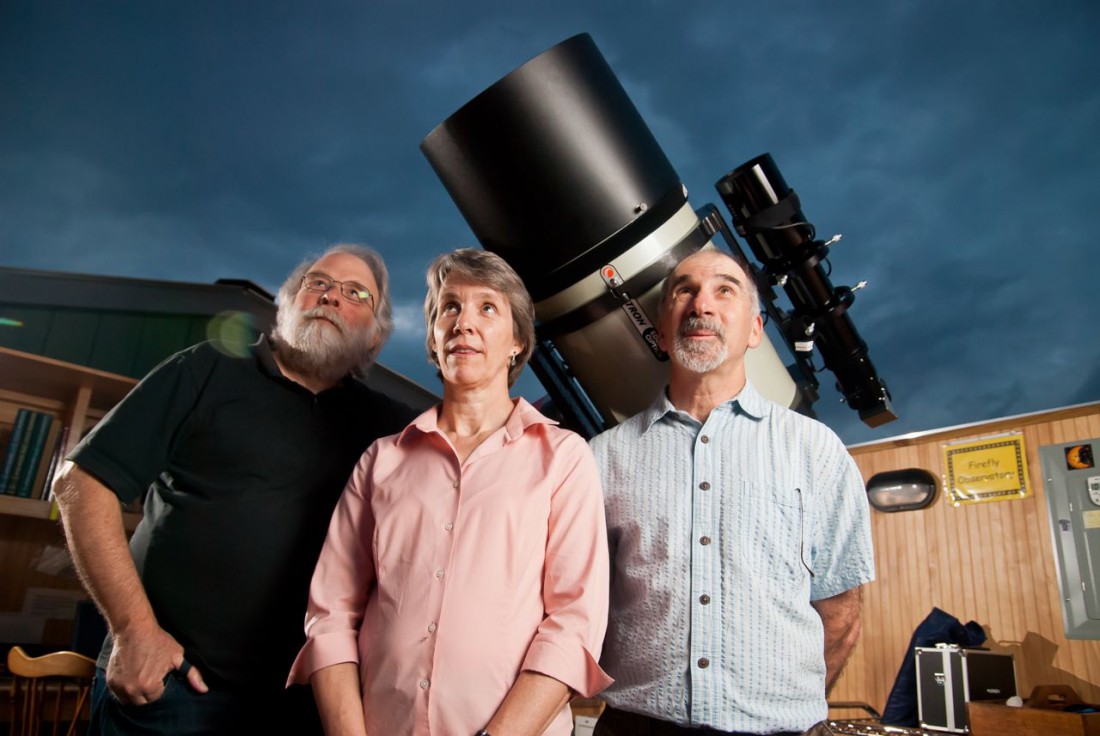People have been charting the movements of heavenly bodies for millennia. The Babylonians created star catalogs as far back as 1200 B.C.; the ancient Egyptians aligned their temples with the rising midwinter sun. Yet today, in the digital age, Asheville lacks a public observatory to mark even the simplest celestial event.
But that’s about to change. Last month, UNCA announced a plan to partner with the Astronomy Club of Asheville to build a small observatory on the south-facing hillside at the north end of campus, at the end of Nut Hill Road.
“We’re so excited about working together,” says Judy Beck, a faculty member in UNCA’s Department of Physics and the science-licensure coordinator for the university’s Department of Education. “It’s really going to be a wonderful university-community partnership.”
The observatory will be a step up for local astro-enthusiasts, who until now have been operating in backyards and parking lots across town, their pursuit of cosmic happenings hampered by light pollution from a variety of commercial and domestic sources.
The 1,300-square-foot facility will provide a shared home for equipment and programs belonging to both the university and the Astronomy Club, and frequent public events are anticipated.
Star students
The university plans to use the new facility as a hands-on “star lab” for students enrolled in astronomy classes, and there are also plans for yet-to-be-developed programming targeting local public-school teachers and their students, says Beck.
“Our first step is to sit down with curriculum specialists and science teachers to collaborate and design programs that will be most effective for teachers and their students,” she says, adding that some programs will be geared to the North Carolina Standard Course of Study for elementary through high school. “Their input is critical.”
An observatory was originally planned by the Astronomy Club as part of a proposed science center at a new Health Adventure, once slated for a vacant property along Broadway near the university. But when the Health Adventure plans fell through in 2011, the group took its proposal to the university, says club president Bernie Arghiere (pictured here).

“This observatory will bring the solar system and the universe a whole lot closer to Asheville and Buncombe residents,” Arghiere tells Xpress. “There are many wonderful astronomical images on the Internet, but nothing takes the place of observing a planet or other celestial object directly in a telescope eyepiece. That’s the power of an observatory.”
The building will have two main rooms: a “warming” room to thaw chilly sky-gazers in winter and an unheated observation room. A key design element for the latter will be borrowed from Arghiere’s personal observatory at his Haw Creek home: a metal roof that retracts all the way back, courtesy of an electric motor, to allow an unobstructed view of the night sky.
Because the building will be relatively small — with room for about 24 observers — additional space for larger groups will be provided on an outdoor patio, project planners say. “When there are big events, like a planetary transit or a comet,” says Beck, “people will be able to use the mounted telescopes [within], and also portable telescopes set up on the patio.”
Instruments will include two 14-inch telescopes, a high-quality optical refractor and a spectrometer, which uses precise measurements of small changes in wavelengths of light arriving from galaxies hundreds of millions of light years away. (UNCA Prof. Dennison is pictured here with a similar telescope). The process allows an observer to measure the rate at which those galaxies are moving away from us — that is, the rate at which the universe is expanding.

Visitors from the general public, for their part, will have more than enough to gawk at, including great views of planets from our solar system and deeper-sky objects like star clusters, says Beck. “Galaxies like the Andromeda galaxy, which is barely visible to the naked eye, should look really nice through one of our new telescopes. And there are some open star clusters that are more compact, and you really get the sense of a group of stars that were formed and are evolving together.”
And while dark-sky conditions on the UNCA campus can’t hope to match those at the Pisgah Astronomical Research Institute, a noted stargazing facility that’s located in the middle of the Pisgah National Forest southwest of Brevard, “it is above the immediate glare of nearby light sources,” says UNCA physics professor Brian Dennison. And it’s accessible, especially for the 100 or so students who enroll in the popular Astronomy 105 class at UNCA each semester. A little glare here in Asheville is “a very worthwhile trade-off, for the accessibility,” he explains.
“We have a high-end camera that can compensate for a lot of light pollution,” Dennison continues, “because its shutter can stay open and collect light for five, 10, even 15 minutes.” Users will find that the 14-inch telescopes mounted in the lab are more than adequate to capture professional images of planets, asteroids and even distant galaxies.
Dennison says students of these phenomena literally look backward in time. “It’s taken 100 million years for that light to get here,” he explains. “You’re actually seeing history. If you’re looking at Jupiter, that might be light from half an hour ago. If you’re looking at the Orion Nebula, it’s about 1,500 years ago. When we’re looking at a distant galaxy, that’s the way it looked millions of years ago — before humans evolved on our planet. There’s a huge realm of possibility that students can pursue.”
That sense of personal discovery, more than big scientific advances, is the main thing in store at the future star lab, says Beck. “One reason astronomy is such an intriguing science is that it really helps people look at relationships among objects from different perspectives and visualize how things are moving out in space,” she explains.
“Astronomy has a pretty strong citizen-scientists component, too, so it’s possible that a citizen or one of our students could make a real contribution.” But perhaps the greatest impact of the new observatory might be giving, say, a business major the experience of looking through a telescope and the thrill of a first view of the rings of Saturn.
Big-sky views, low-impact building
Neighbors are likely breathing a sigh of relief that UNCA isn’t going forward with an earlier plan to build a conference center on the Nut Hill site. In contrast to the hustle of activity associated with meeting facilities, observatories naturally make for dark, quiet neighbors.
Building plans call for retaining as many of the mature trees on the site as possible, removing only those needed to maintain the view of the southern sky, where a lot of the astronomical action is, says Arghiere.
Project planners say the building will be positioned off the ridge top at the dead end of Nut Hill Road; no additional pavement will be added save for a small turnaround required for emergency vehicles. The low-impact nature of the project also includes minimal lighting and composting toilets.
“The university’s decision to put an observatory up there represents a commitment to a dark site that tends to preclude large scale development,” explains Dennison.“It’s a wonderful union between two organizations that have complementary goals. I think it’s an ideal use of that site.”
Beck concurs, adding that the whole endeavor serves to connect the Asheville community to something bigger. “Astronomy really is a global effort. You can’t do it from one spot on the Earth. It gives students an appreciation of collaboration around the globe … and of changing views on the nature of our universe.”

(photos by Max Cooper)






That is one heck of a telescope; one should be able to see the private parts of a Martian gnat with that thing (assuming good viewing conditions). I think this is a great thing for Asheville.